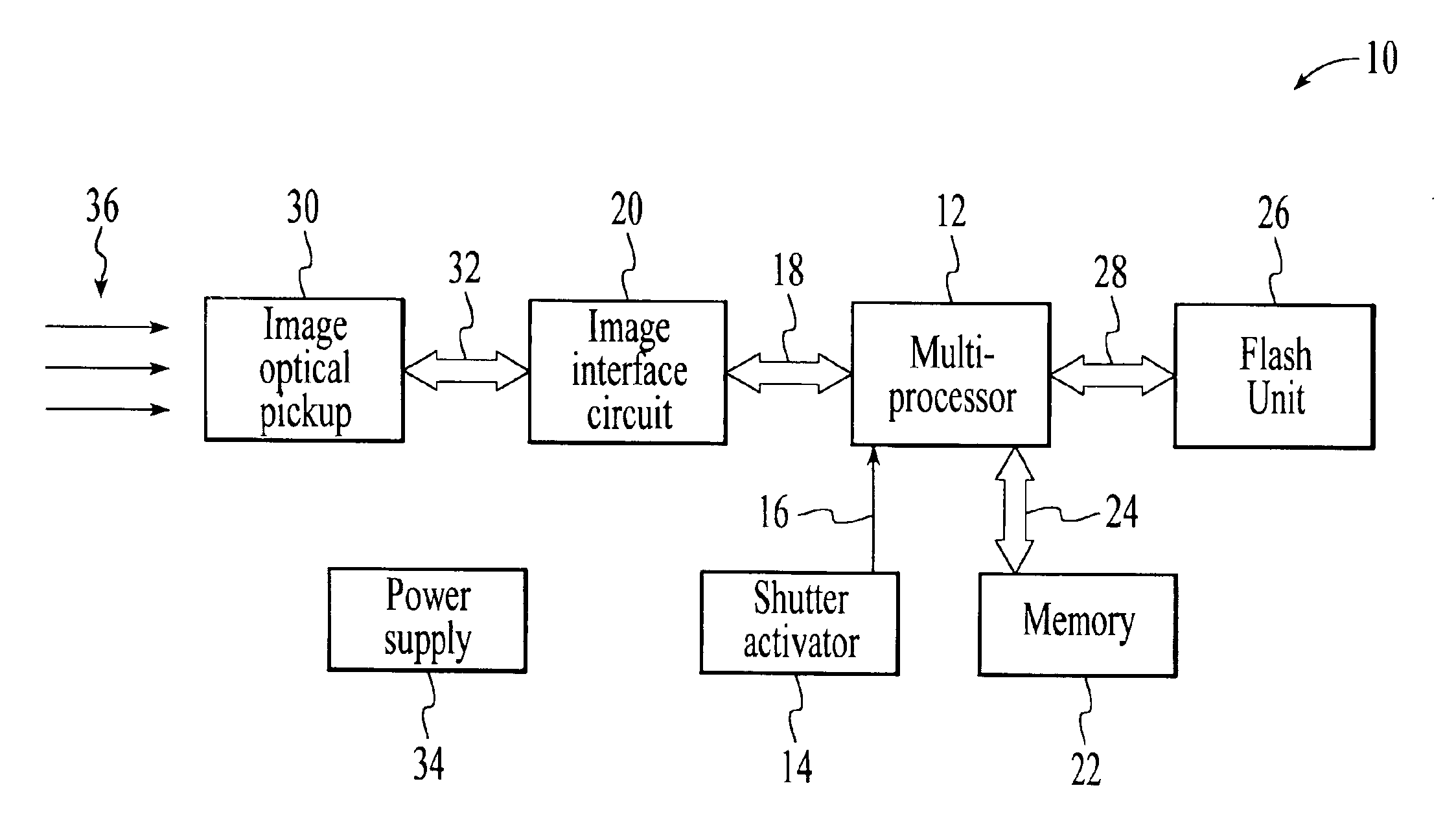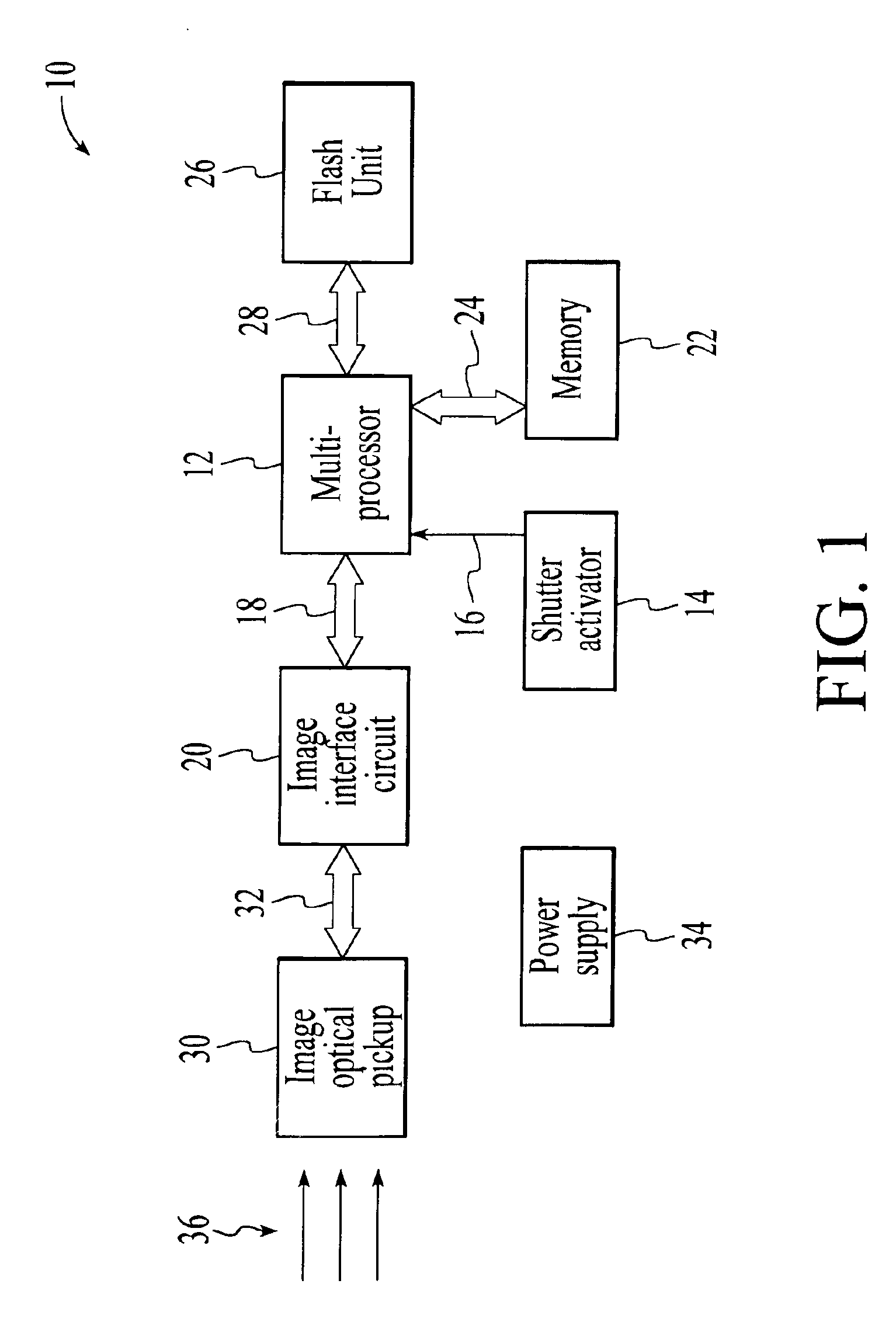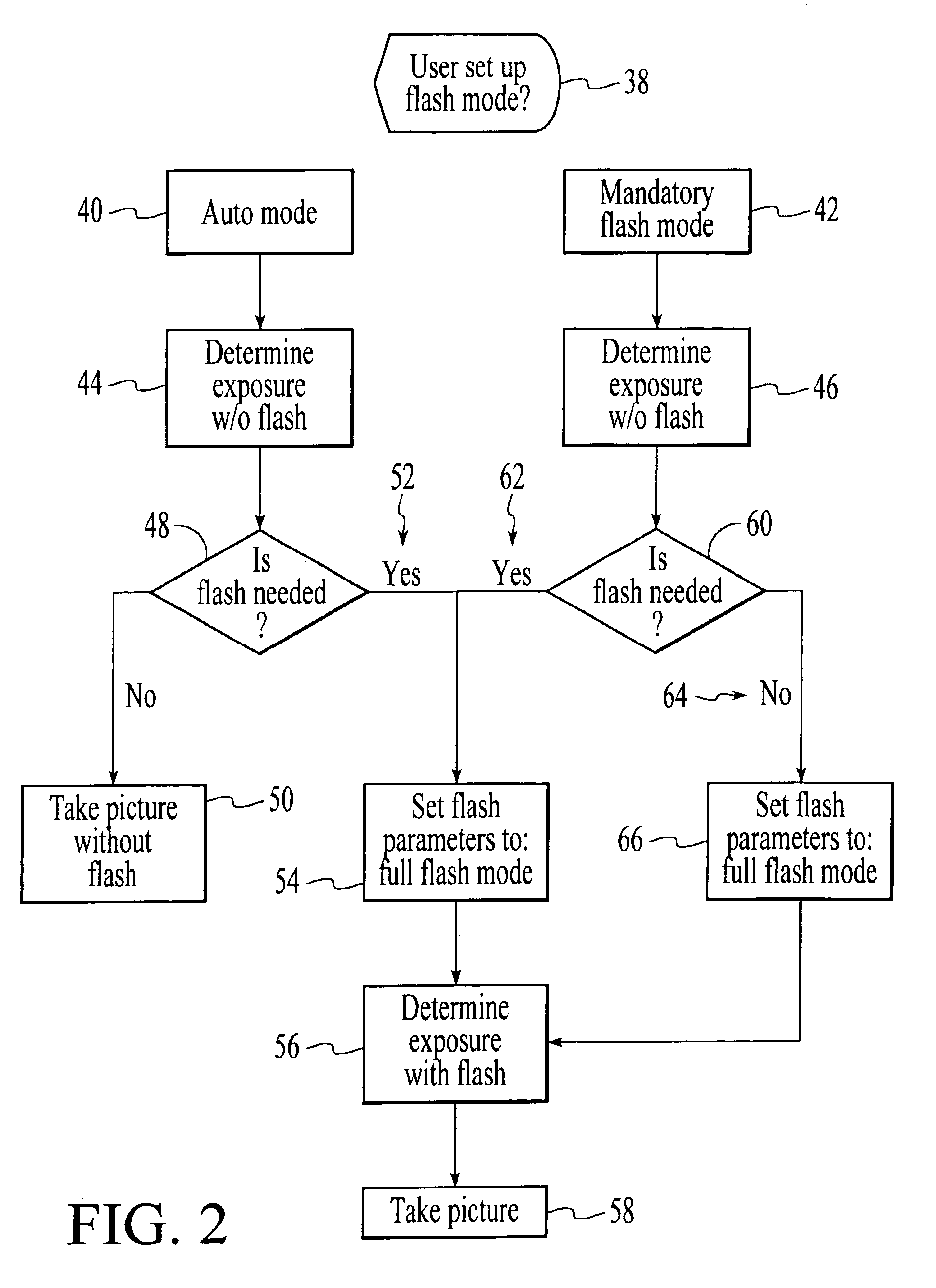Intelligent camera flash system
a camera flash and intelligent technology, applied in the field of intelligent camera flash system, can solve the problem of high cost of analysis of the output of each of these elements
- Summary
- Abstract
- Description
- Claims
- Application Information
AI Technical Summary
Benefits of technology
Problems solved by technology
Method used
Image
Examples
Embodiment Construction
[0037]A typical camera system in which the method and apparatus of the present invention is employed is shown in FIG. 1, wherein a digital camera 10 is illustrated having a multiprocessor 12 activated by shutter activator 14 through line 16, and communicating through bus 18 with image interface circuit 20. The multiprocessor further communicates with memory 22 through bus 24 and interconnects with the flash unit 26 through bus 28. Image optical pick-up 30 is interconnected to the image interface circuit 20 through bus 32. A power supply 34 is shown for providing electrical energy to the various circuit components through lines not shown.
[0038]In response to the shutter activator 14, light 36 from an image to be recorded is received by the image optical pick-up 30 and sent via bus 32 to the image interface circuit 20 which communicates with the pick-up 30 and processor 12 to provide digital image intensity data corresponding to the light 36. Further details of the pick-up 30 and circ...
PUM
 Login to View More
Login to View More Abstract
Description
Claims
Application Information
 Login to View More
Login to View More - R&D
- Intellectual Property
- Life Sciences
- Materials
- Tech Scout
- Unparalleled Data Quality
- Higher Quality Content
- 60% Fewer Hallucinations
Browse by: Latest US Patents, China's latest patents, Technical Efficacy Thesaurus, Application Domain, Technology Topic, Popular Technical Reports.
© 2025 PatSnap. All rights reserved.Legal|Privacy policy|Modern Slavery Act Transparency Statement|Sitemap|About US| Contact US: help@patsnap.com



